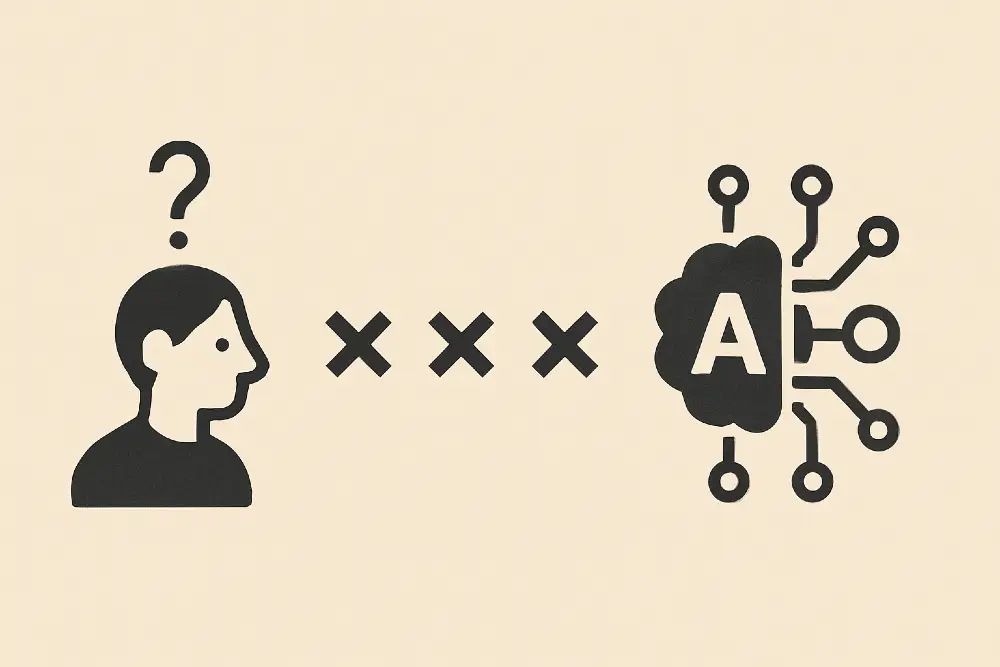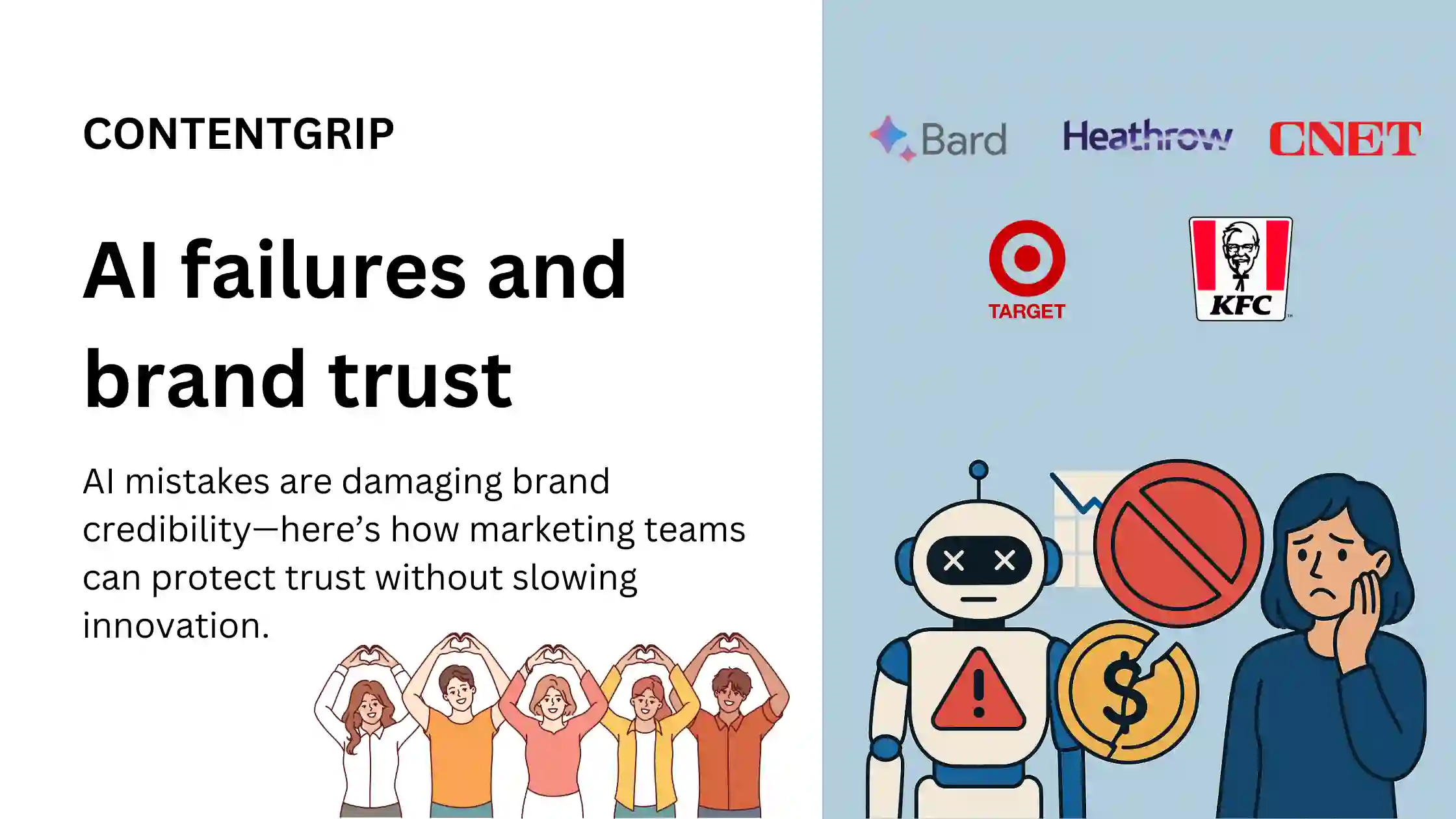Think better, not faster: A veteran communicator's approach to AI integration
Marco Dautel shares how 20 years in PR taught him to use AI for strategic thinking, not just efficiency. Learn his framework for better AI integration.

Marco Dautel has spent two decades in PR and communications leadership, from agency roles at Grayling and Edelman to corporate positions at Jochen Schweizer. His latest venture—The CommsTransformer, a solo consultancy launched last year—embodies a philosophy that runs counter to how most professionals approach AI: rather than chasing efficiency gains, Marco focuses on using artificial intelligence to enhance strategic thinking.
According to company materials, The CommsTransformer helps SMEs, start-ups and scale-ups move "out of reaction mode and into strategic visibility," working with clients from Topgolf Deutschland to social entrepreneurs.
Marco's methodology comes at a critical moment for the communications industry. As AI adoption accelerates—with 60% of professionals believing AI will have the biggest effect on marketing communications, though 40% remain in experimental stages—practitioners face pressure to integrate these tools for speed and efficiency. Yet 75% of generative AI users are looking to automate tasks at work and use AI for work communications, often missing the technology's deeper strategic potential.
In this interview, Marco discusses common AI integration mistakes he's observed, his systematic approach to strategic AI use, and why the real competitive advantage comes from using AI to think better, not just work faster.
Short on time?
Here’s a table of contents for quick access:
- Using AI to enhance strategic thinking, not replace it
- Where AI creates the most strategic value
- The critical mistakes teams make with AI integration
- A practical framework for strategic AI prompting
- Navigating AI's limitations in high-stakes communication
- The implementation advantage: strategic thinking over speed gains
Using AI to enhance strategic thinking, not replace it
Marco's AI journey began from necessity during his agency days, but his approach evolved beyond typical efficiency-focused implementations. "At Grayling, in late 2023 and later at Achtung!, we were constantly juggling complex positioning work, tight timelines, and growing content demands," he explains. Rather than treating AI as a writing tool, he developed a different methodology: "I started using AI less as a writing tool and more as an interactive sparring partner."
This shift reflects a fundamental difference in how experienced practitioners approach AI compared to those focused primarily on efficiency gains. Where many professionals use AI to generate finished copy quickly, Marco leverages it to accelerate ideation and stress-test strategic thinking. "I could bounce around ideas, pressure-test narratives, or structure early thoughts without having to wait for a team or a meeting."
The approach becomes especially valuable for strategic decision-making. His daily toolkit centers on a customized ChatGPT version functioning as what he calls a "strategic co-pilot"—helping structure content, test messaging hooks, and overcome creative blocks while preserving the human judgment that comes from two decades of communications experience. The focus isn't on producing content faster, but on creating space for deeper strategic consideration.

Where AI creates the most strategic value
According to Marco, AI delivers maximum impact at the intersection of strategy and production. "AI helps me move faster from 'this feels off' to 'here's a sharper version,'" he explains. "It's great for building structure: positioning statements, messaging systems, narratives. But it also gives me room to play, trying out different angles or tones before I land on something that feels right."
The production benefits are tangible but limited. AI provides what Marco describes as "a strong 70%—fast" for concept drafts, social posts, and client reframes. However, he's clear about AI's boundaries: "The hard part is still the final 20%." This final refinement—where human judgment, industry knowledge, and strategic thinking come into play—remains irreplaceably human.
Marco sees particular potential in reporting processes, especially as a solo consultant. While his previous agency roles had already automated much of their reporting workflow, he's now exploring how AI can support more sophisticated analysis and insight generation for client work.
The critical mistakes teams make with AI integration

Marco identifies several patterns when communications teams attempt AI integration, most stemming from fundamental misunderstandings about the technology's role. The primary error: "expecting AI to replace thinking instead of helping with it." Teams also treat prompting like search queries rather than strategic briefing conversations.
His solution emphasizes methodical experimentation: "Start small. Test AI in low-risk use cases, content outlines, persona summaries, tonal rewrites, and build from there." More critically, he warns against relegating AI usage to junior staff while senior team members remain uninformed. "Don't just throw tools at interns. Make sure your senior team knows how to use AI well. Otherwise, the output will reflect the input."
The deeper issue reveals a misunderstanding about professional competency in the AI era. Marco uses a craftsmanship analogy to illustrate this point: just as "an experienced sculptor you know how to use a chisel well to get the result you want," he explains, his two decades in communications help him "use AI to craft content and strategy quicker, but I will also know how to fine tune so that it fits the market, industry or company best."
This experience advantage becomes crucial for quality control. Seasoned professionals can identify when AI suggestions miss the mark—recognizing tone problems, strategic misalignment, or industry-specific nuances that algorithms cannot detect. "AI cannot replace experience. AI is an impulse generator."

A practical framework for strategic AI prompting
This strategic approach to AI integration requires a systematic method for interaction. Marco's go-to prompt structure borrows from traditional creative briefing methodologies, adapted for AI interaction. His framework includes four core components:
- Role (who should the AI act as—strategist or copywriter?)
- Audience (who is this for?)
- Context (what's the situation—product launch, repositioning?)
- Expectation (tone, format, length, style preferences).
While this structure "sounds basic," Marco emphasizes its effectiveness in generating more strategic and useful outputs. The approach treats AI interaction as a briefing conversation rather than a simple query, leading to more nuanced and contextually appropriate results.
Navigating AI's limitations in high-stakes communication
Tone presents the biggest challenge when using AI for corporate communications. "AI can sound smart but also generic, flat, or too polished when what you really need is nuance," Marco observes.
His solution is strategic delegation: using AI for structure, framing, and options generation, while personally handling the humanization of final outputs—especially for leadership communication, sensitive topics, or situations where brand trust and reputation are at stake.
The tension between speed and thoughtfulness requires constant navigation. While AI accelerates initial ideation and drafting, Marco has learned to slow down when stakes are high.
"Ask the second question. Push back on my own assumptions," he advises. "The beauty of the speed is that you can easily let the idea or strategy simmer for a while and re-think the path you were going. So use parts of the time you saved to think differently and maybe come up with an even better solution."
The implementation advantage: strategic thinking over speed gains
Marco's approach to AI integration centers on a fundamental insight that separates strategic practitioners from efficiency-focused adopters: "Use AI to think better, not just work faster. That's where the real value is."
This philosophy challenges the prevailing industry narrative around AI adoption. While most discussions focus on time savings and productivity metrics, Marco argues for a deeper integration that enhances decision-making quality rather than just accelerating output.
His warning to the industry reflects this strategic perspective: "AI isn't here to replace anyone in comms. But if you're not learning how to use it strategically, someone else will. And they'll move faster, with sharper ideas, and more time to focus on the human part of the work."




